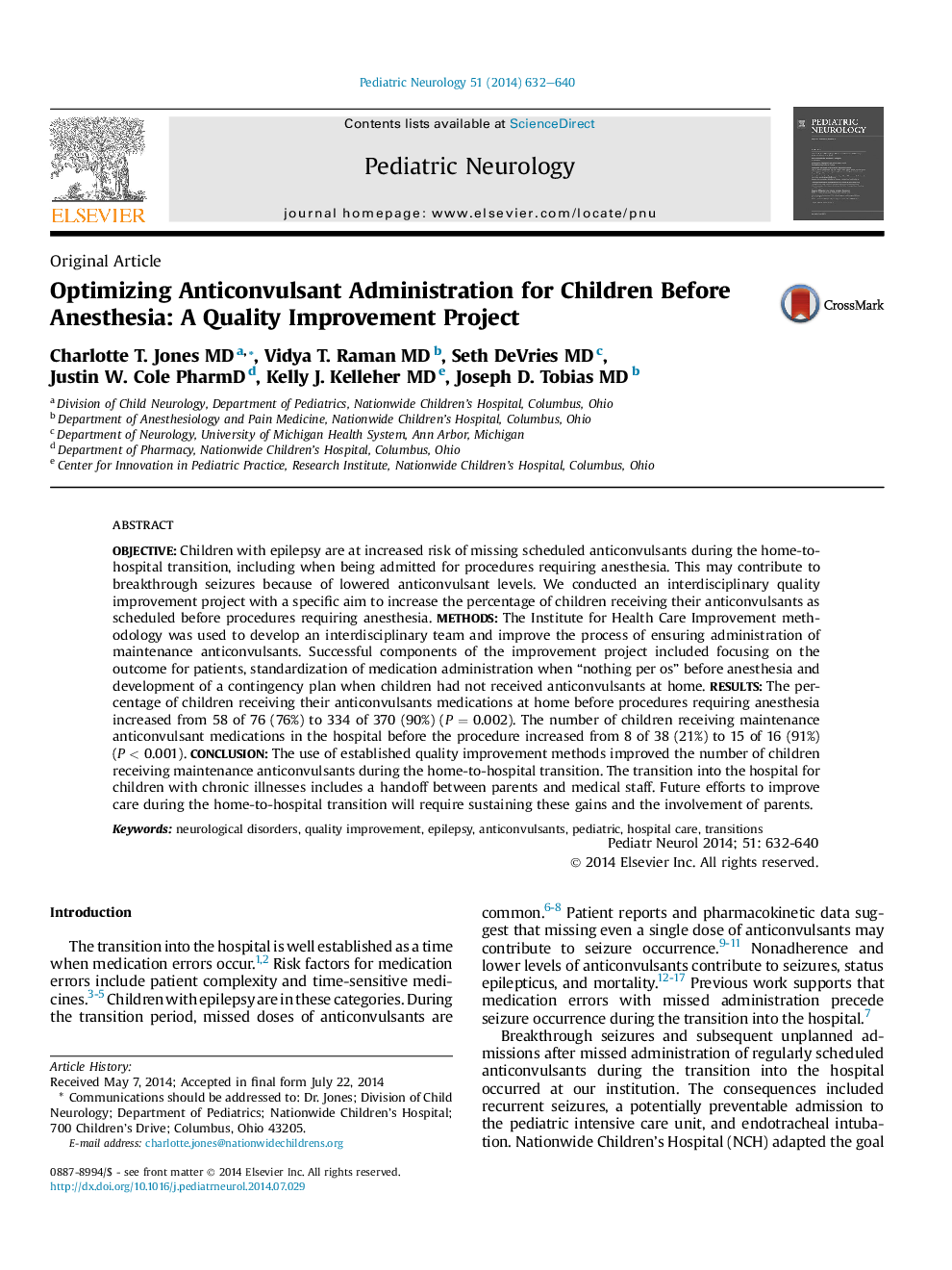| کد مقاله | کد نشریه | سال انتشار | مقاله انگلیسی | نسخه تمام متن |
|---|---|---|---|---|
| 3084751 | 1189780 | 2014 | 9 صفحه PDF | دانلود رایگان |
ObjectiveChildren with epilepsy are at increased risk of missing scheduled anticonvulsants during the home-to-hospital transition, including when being admitted for procedures requiring anesthesia. This may contribute to breakthrough seizures because of lowered anticonvulsant levels. We conducted an interdisciplinary quality improvement project with a specific aim to increase the percentage of children receiving their anticonvulsants as scheduled before procedures requiring anesthesia.MethodsThe Institute for Health Care Improvement methodology was used to develop an interdisciplinary team and improve the process of ensuring administration of maintenance anticonvulsants. Successful components of the improvement project included focusing on the outcome for patients, standardization of medication administration when “nothing per os” before anesthesia and development of a contingency plan when children had not received anticonvulsants at home.ResultsThe percentage of children receiving their anticonvulsants medications at home before procedures requiring anesthesia increased from 58 of 76 (76%) to 334 of 370 (90%) (P = 0.002). The number of children receiving maintenance anticonvulsant medications in the hospital before the procedure increased from 8 of 38 (21%) to 15 of 16 (91%) (P < 0.001).ConclusionThe use of established quality improvement methods improved the number of children receiving maintenance anticonvulsants during the home-to-hospital transition. The transition into the hospital for children with chronic illnesses includes a handoff between parents and medical staff. Future efforts to improve care during the home-to-hospital transition will require sustaining these gains and the involvement of parents.
Journal: Pediatric Neurology - Volume 51, Issue 5, November 2014, Pages 632–640
